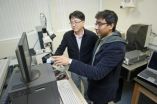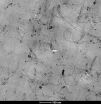(Press-News.org) Despite international agreements on climate protection and political declarations of intent, global greenhouse gas emissions have not decreased. On the contrary, they continue to increase. With a growing world population and significant industrialization in emerging markets such as India and China the emission trend reversal necessary to limit global warming seems to be unlikely. Therefore, large-scale methods to artificially slow down global warming are increasingly being discussed. They include proposals to fertilize the oceans, so that stimulated plankton can remove carbon dioxide (CO2) from the atmosphere, or to reduce the Sun's incoming radiation with atmospheric aerosols or mirrors in space, so as to reduce climate warming. All of these approaches can be classified as "climate engineering". "However, the long-term consequences and side effects of these methods have not been adequately studied," says Dr. David Keller from the GEOMAR Helmholtz Centre for Ocean Research Kiel. Together with colleagues the expert in earth system modelling has compared several Climate Engineering methods using a computer model. The results of the study have now been published in the internationally renowned online journal Nature Communications.
"The problem with previous research was that in most cases the methods were studied with different models using different assumptions and different sets of earth system components, making it difficult to compare the effects and side effects of different methods," Dr. Keller says. He adds: "We wanted to simulate different climate engineering methods using the same basic assumptions and Earth system model". For their study, the researchers chose five well-known climate engineering approaches: The reduction of incoming solar radiation, the afforestation of large desert areas in North Africa and Australia, and three different techniques aimed at increasing ocean carbon uptake. In parallel, the scientists also simulated future changes in the Earth system without climate engineering, based on the high-CO2 emission scenario used by the UN IPCC.
Even under ideal conditions assumed in the simulations, the potential benefits of the various climate engineering methods were limited. Only a continuous reduction of solar radiation could prevent the Earth from warming significantly. The afforestation of the Sahara and the Australian outback, however even caused some additional global warming: "The forests removed carbon dioxide from the atmosphere, but at the same time the earth's surface became darker and could store more heat," Dr. Keller explains of this phenomenon. All of the other techniques showed significant side effects, too. For example, the fertilization of the oceans allowed plankton to remove CO2 from the atmosphere, but also changed the size of ocean oxygen minimum zones.
Another important question for the researchers: What happens if climate engineering is stopped after a few decades for technical or political reasons? "For several methods we saw a rapid change in the simulated climate when climate engineering ended," says Dr. Keller. For example, if after 50 years the sun's rays were no longer partially blocked, the Earth warmed by several degrees within a few decades. "This change would be much faster than the current rate of climate change, with potentially even more catastrophic consequences," says Keller.
The study is the basis for further research in the priority program "Climate Engineering: Risks, Challenges, Opportunities?" of the German Research Foundation (DFG), coordinated by co-author Prof. Dr. Andreas Oschlies from GEOMAR. "In addition to natural science studies, we also want to learn more about the potential social, political, legal and ethical aspects of proposed climate engineering methods. For one thing, this study clearly shows that there would always be many losers in addition to possible winners. Some side effects would even affect future generations. A decision for or against climate engineering thus would have to be considered carefully and be fully legitimized, and must thus be based on a much better understanding of possible effects, uncertainties and risks than we have today," says Professor Oschlies .
INFORMATION: END
Climate engineering: Minor potential, major side effects
GEOMAR researchers show limitations and side effects of large-scale climate intervention
2014-02-25
ELSE PRESS RELEASES FROM THIS DATE:
Breast-feeding benefits appear to be overstated, according to study of siblings
2014-02-25
COLUMBUS, Ohio – A new study comparing siblings who were fed differently during infancy suggests that breast-feeding might be no more beneficial than bottle-feeding for 10 of 11 long-term health and well-being outcomes in children age 4 to 14.
The outlier was asthma, which was associated more with breast-feeding than with bottle-feeding.
The study also included an analysis of outcomes across families of different races and socioeconomic circumstances for comparison purposes, and those results matched other studies suggesting that breast-feeding's benefits to children ...
Smartphone-based voting technology may lead to fewer user errors
2014-02-25
Many U.S. counties have incorporated electronic voting technology, largely in response to well-publicized challenges related to older mechanical and punch-card models. Although these updated systems have solved some usability problems, they present a new set of issues for voters unfamiliar with the technology. A new study published in Human Factors examines how smartphone-based voting systems can be incorporated into the current large-scale election process.
"Current electronic voting systems have numerous issues - from usability and accessibility to security to the ...
New approach to chip design could yield light speed computing
2014-02-25
Every second, your computer must process billions of computational steps to produce even the simplest outputs. Imagine if every one of those steps could be made just a tiny bit more efficient. "It would save precious nanoseconds," explained Northeastern University assistant professor of physics Swastik Kar.
Kar and his colleague Yung Joon Jung, an associate professor in the Department of Mechanical and Industrial Engineering, have developed a series of novel devices that do just that. Their work was published recently in the journal Nature Photonics.
Last year, the ...
Geology covers Mars, the Moon, anthropogenic lead poisoning, earthquake hazards, and more
2014-02-25
Boulder, Colo., USA – The Geological Society of America's top journal, Geology, displays its multidisciplinary best in this latest posting. Earth science disciplines covered include geoarchaeology, climatology, invertebrate paleontology, sedimentology, geomorphology, seismology, planetary geology, geochemistry, glaciology, plate tectonics, mineralogy, and environmental and medical geology. Locations include Mars; Earth's moon; India; the Tibetan Plateau; the Saskatchewan River; L'Aquila, Italy; the Antarctic; Australia; the Andes; the San Andreas fault system; and Kume ...
Scientists twist sound with metamaterials
2014-02-25
WASHINGTON D.C. Feb. 25, 2014 -- A Chinese-U.S. research team is exploring the use of metamaterials -- artificial materials engineered to have exotic properties not found in nature -- to create devices that manipulate sound in versatile and unprecedented ways.
In the journal Applied Physics Letters, the team reports a simple design for a device, called an acoustic field rotator, which can twist wavefronts inside it so that they appear to be propagating from another direction.
"Numerous research efforts have centered on metamaterial-based devices with fascinating wave-control ...
Improvement in polymers for aviation
2014-02-25
We live surrounded by polymers and today, rather than come up with new polymers, there is a tendency to modify them in order to obtain new applications. Carbon nanotubes have excellent mechanical properties, are very tough, very rigid, and what is more, they conduct electricity. "The problem with them is that they get dispersed, in other words, it's very difficult to get them to blend with polymers," explained Iñaki Eguiazabal, a member of the Polymer Technology Group. That is why it is essential to come up with methods that will enablethe carbon nanotubes to have a ...
'Greener' aerogel technology holds potential for oil and chemical clean-up
2014-02-25
MADISON, Wis. – Cleaning up oil spills and metal contaminates in a low-impact, sustainable and inexpensive manner remains a challenge for companies and governments globally.
But a group of researchers at the University of Wisconsin–Madison is examining alternative materials that can be modified to absorb oil and chemicals without absorbing water. If further developed, the technology may offer a cheaper and "greener" method to absorb oil and heavy metals from water and other surfaces.
Shaoqin "Sarah" Gong, a researcher at the Wisconsin Institute for Discovery (WID) ...
Glycerol phenylbutyrate reduces hepatic encephalopathy events
2014-02-25
Phase 2 trial results published in the March issue of Hepatology, a journal of the American Association for the Study of Liver Diseases, suggests the potential for Glycerol Phenylbutyrate (GPB) to reduce hepatic encephalopathy episodes in patients with cirrhosis, with a safety profile similar to placebo.
Patients with hepatic encephalopathy experience neuropsychiatric symptoms that may range from mild confusion to coma. There is conflicting evidence on the link between elevated blood ammonia and hepatic encephalopathy. Poorly-absorbable disaccharides and antibiotics ...
Sensor-based irrigation systems show potential to increase greenhouse profitability
2014-02-25
COLLEGE PARK, MD--Wireless sensor-based irrigation systems can offer significant benefits to greenhouse operators. Advances in sensor technology and increased understanding of plant physiology have made it possible for greenhouse growers to use water content sensors to accurately determine irrigation timing and application rates in soilless substrates. The wireless sensor systems provide more accurate measurements of substrate moisture than qualitative methods, and can save irrigation water, labor, energy, and fertilizer. The authors of a report published in HortTechnology ...
Technique to create holes in graphene could improve water filters, desalination
2014-02-25
Researchers have devised a way of making tiny holes of controllable size in sheets of graphene, a development that could lead to ultrathin filters for improved desalination or water purification.
The team of researchers at MIT, Oak Ridge National Laboratory, and in Saudi Arabia succeeded in creating subnanoscale pores in a sheet of the one-atom-thick material, which is one of the strongest materials known. Their findings are published in the journal Nano Letters.
The concept of using graphene, perforated by nanoscale pores, as a filter in desalination has been proposed ...
LAST 30 PRESS RELEASES:
University of Oklahoma researcher awarded funding to pursue AI-powered material design
Exploring how the visual system recovers following injury
Support for parents with infants at pediatric check-ups leads to better reading and math skills in elementary school
Kids’ behavioral health is a growing share of family health costs
Day & night: Cancer disrupts the brain’s natural rhythm
COVID-19 vaccination significantly reduces risk to pregnant women and baby
The role of vaccination in maternal and perinatal outcomes associated with COVID-19 in pregnancy
Mayo Clinic smartwatch system helps parents shorten and defuse children's severe tantrums early
Behavioral health spending spikes to 40% of all children’s health expenditures, nearly doubling in a decade
Digital cognitive behavioral treatment for generalized anxiety disorder
Expenditures for pediatric behavioral health care over time and estimated family financial burden
Air conditioning in nursing homes and mortality during extreme heat
The Alps to lose a record number of glaciers in the next decade
What makes a good proton conductor?
New science reporting guide published for journalists in Bulgaria
New international study reveals major survival gaps among children with cancer
New science reporting guide published for journalists in Turkey
Scientists develop a smarter mRNA therapy that knows which cells to target
Neuroanatomy-informed brain–machine hybrid intelligence for robust acoustic target detection
Eight SwRI hydrogen projects funded by ENERGYWERX
The Lundquist Institute and its start-up company Vitalex Biosciences Announces Strategic Advancement of Second-Generation fungal Vaccine VXV-01 through Phase 1 Trials under $40 Million Competitive Con
Fine particles in pollution are associated with early signs of autoimmune disease
Review article | Towards a Global Ground-Based Earth Observatory (GGBEO): Leveraging existing systems and networks
Penn and UMich create world’s smallest programmable, autonomous robots
Cleveland researchers launch first major study to address ‘hidden performance killer’ in athletes
To connect across politics, try saying what you oppose
Modulating key interaction prevents virus from entering cells
Project explores barriers to NHS career progression facing international medical graduates
Jeonbuk National University researchers explore the impact of different seasonings on the flavor perception of Doenjang soup
Two Keck Medicine of USC Hospitals named Leapfrog Top Teaching Hospitals
[Press-News.org] Climate engineering: Minor potential, major side effectsGEOMAR researchers show limitations and side effects of large-scale climate intervention



